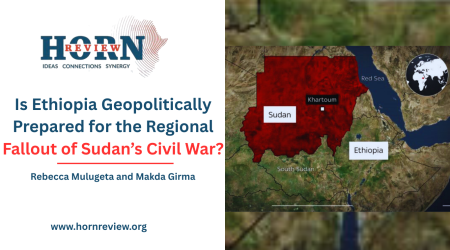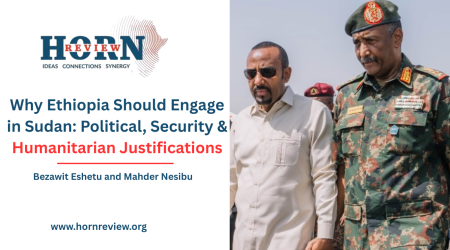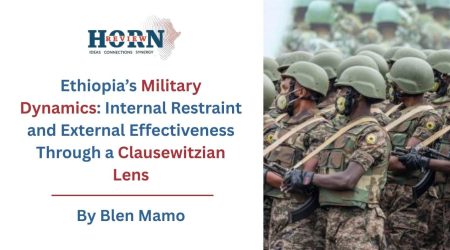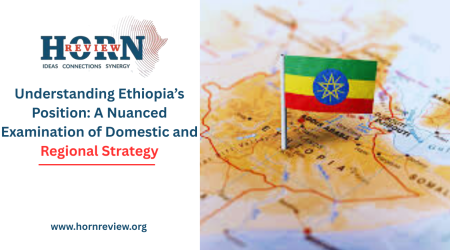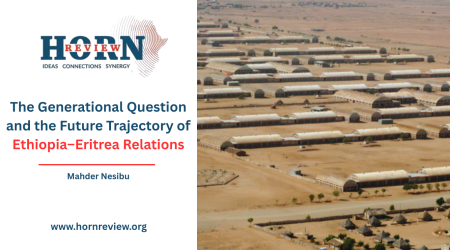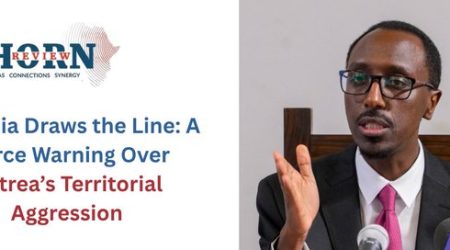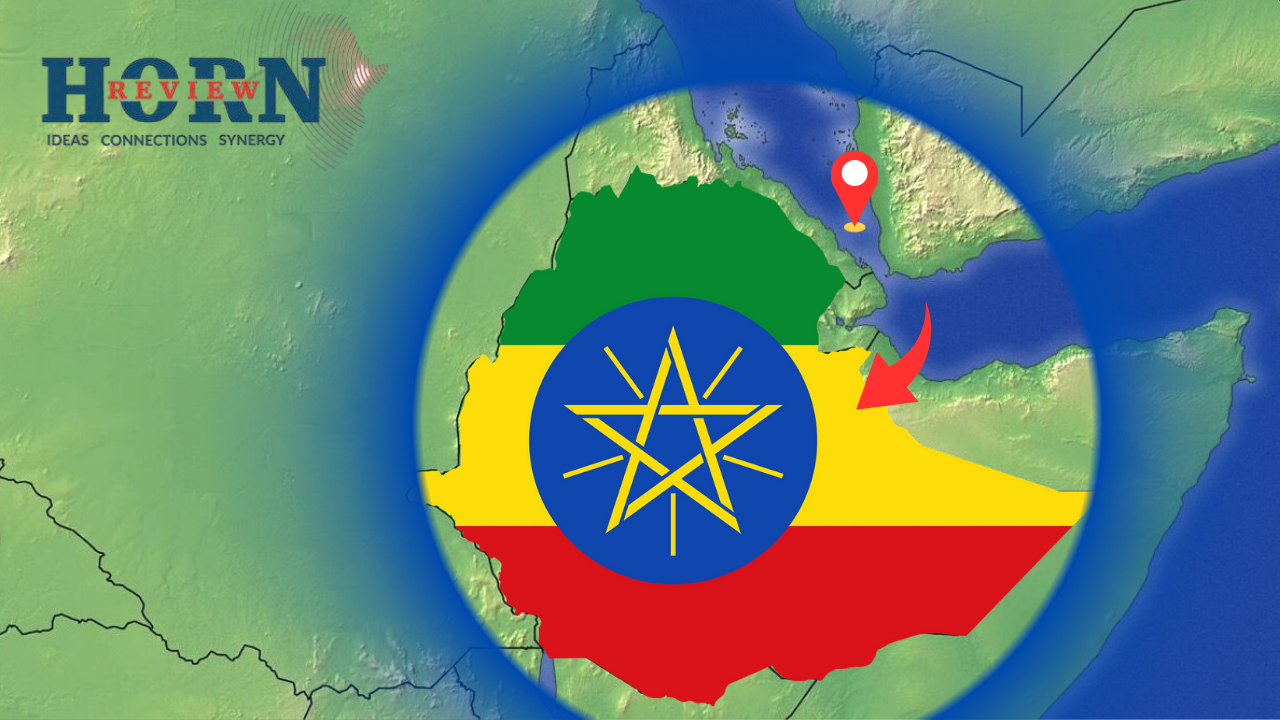
30
Jul
From Securitized Diplomacy to Strategic Pluralism: Ethiopia’s Foreign Policy Reorientation Since 2018
Since the fall of the Derg in 1991, Ethiopia’s foreign policy evolved under the Ethiopian People’s Revolutionary Democratic Front (EPRDF) with an overriding emphasis on state survival and national cohesion. By November 2002, in the aftermath of the brutal border war with Eritrea and internal fractures within the ruling EPRDF coalition, for the first time foreign policy was merged with national security into a single, overarching strategic framework of the “Foreign Affairs and National Security Policy and Strategy” white paper.
The White Paper articulated that unless Ethiopia’s internal vulnerabilities, poverty, under-development, and fragile governance were addressed as a precondition, external engagements would be hollow exercises. The policy’s founding principle declared national survival as the “alpha and omega” of both foreign affairs and security, arguing that prosperity and stability externally depended on strong internal foundations.
The 2002 policy offered some advantages that cannot be ignored. First, it gave an emphasis on enhancing sectoral integration: defense, intelligence, diplomacy, and development bodies shared information seamlessly. For instance, military intelligence informed diplomatic negotiations on the Eritrea border, while foreign missions echoed domestic security concerns back to Addis Ababa, creating a feedback loop that bolstered policy coherence (Deressa, 2014). Second, the single-framework approach prevented external actors from exploiting sectoral gaps; foreign intervention in internal matters was somehow curtailed.
Yet, this integration had drawbacks. Conflating diplomacy with security tended to securitize routine foreign engagements. Economic liberalization and multilateral cooperation often fell prey to suspicion, as any opening was measured against potential security risks (SCIRP, 2020). The exaltation of “national survival” sometimes overshadowed democratic principles: although the policy rhetorically enshrined democracy and development as its pillars, in practice these aims were subservient to ruling-party interests. Finally, the centralized model risked overburdening institutions whose mandates blurred causing stretched capacity and undermining specialization. Moreover, the policy was not formally revised for many years, failing to integrate crucial local political reforms, changes in neighboring countries, and evolving international dynamics.
Unlike the 2002 framework that tightly wove foreign affairs into a unified national security strategy, the post-2018 administration delineated its external engagement into distinct diplomatic pillars. This institution-centered model aimed to professionalize the Ministry of Foreign Affairs, decouple security imperatives from development goals, and foster multilateral cooperation.
At the outset of its tenure in 2018, the new Ethiopian administration initiated an intensive diplomatic outreach campaign to the Middle East signaling both a break with the cautious, state-centric tone of the predecessors.
Under this new rubric, historic foes were embraced as partners: the 2018 peace accord with Eritrea, negotiated through personal envoys, exemplified the unorthodox, top-down style that came to define the era, even as the substance of the agreement remained largely opaque to both domestic and international audiences. Yet this personalized peacemaking also entailed the de-institutionalization of foreign affairs, a trend that was laid bare by the breakout of the Tigray War in late 2020. In its aftermath, the administration confronted a fractured security apparatus and weakened institutional linkages.
By early 2022, there was a recognition of the perils of over-personalization and the need to restore a coherent, institutional backbone to Ethiopia’s engagement abroad. The once-smooth channels among defense, intelligence, and diplomacy required reconstruction from scratch, particularly as individuals with previous TPLF affiliations were transitioned out of key positions and their influence curtailed. Nevertheless, the government has embarked on comprehensive reforms aimed at reviving sectoral integration under a new ethos.
Where the EPRDF-era foreign policy enshrined in the 2002 White Paper had fused external engagement with national security imperatives, the new administration inducted a model that was at once more personalized and, paradoxically, more open to doctrinal overhaul.
In March 2022, the Ministry of Foreign Affairs (MoFA) introduced a draft foreign policy that marked a deliberate departure from the 2002 merger of diplomacy and security. This draft rested on four interlocking pillars. Peace diplomacy, economic diplomacy, citizen-oriented diplomacy, and public diplomacy, each designed to re-institutionalize specialized functions within the MoFA and to empower career diplomats alongside political leadership. Peace diplomacy aimed to leverage Ethiopia’s mediating role in regional conflicts; economic diplomacy sought to align foreign missions with the government’s liberalization agenda; citizen-oriented diplomacy placed the Ethiopian diaspora at the forefront of soft-power projection; and public diplomacy emphasized transparent communication and cultural exchange. The administration has reoriented the country’s foreign policy around the Horn First Doctrine, marking a decisive departure from the inward-focused 2002 policy.
Crucially, the draft proposed explicit mechanisms for inter-ministerial coordination, reestablishing channels between defense, intelligence, trade and foreign affairs that had atrophied during the de-institutionalized years. The envisioned structure included a “Foreign Policy Council” chaired by the foreign minister, to ensure that strategic objectives remained synchronized across sectors.
The absence of robust institutional safeguards left Ethiopia vulnerable to abrupt policy reversals and weakened its diplomatic corps. The 2022 draft, had it been adopted, promised greater resilience by embedding clear mandates and coordination mechanisms. This marked a shift from securitized foreign engagement to a more specialized, civilian-led diplomatic model focused on development, soft power, and institutional diversification. While this reorientation promised greater professionalization and broader policy focus, it also critically assess losing the coherence and operational integration, particularly in moments of acute national crisis.
Among the major developments introduced was the launch of a new Digital Diplomacy Unit to streamline intelligence-driven decision-making, whereby embassies now upload security assessments, investment leads, and political risk analyses into a secure, shared platform accessible to all relevant agencies, ensuring that both economic negotiations and peace mediation efforts rest on the same data foundation.
Despite these reforms, significant challenges persist in practice. The newly established coordination bodies often contend with overlapping mandates and unclear authority lines, leading to delays when urgent decisions demand rapid inter-agency consensus. For instance, when Sudanese officials accused Ethiopian militias of fresh incursions into the disputed Al-Fashaga on July 2025, the federal government did not issue or make publicly available its official response immediately after the incident.
In the current period of reform, as the government rebuilds institutions fractured by internal conflict, the 2022 draft’s pillar-based approach will continue to shape Ethiopia’s external engagements. Ensuring that foreign policy serves not only the exigencies of national security but also the broader imperatives of economic growth, citizen empowerment and global partnership remains the central test for Ethiopia’s next chapter on the world stage.
By Yonas Yizezew,Researcher,Horn Review
REFERENCES
- Chen, X., & Hawaz, Y. N. (2020). The justification of 2002 Ethiopian foreign and national security policy alteration. Open Journal of Social Sciences, 8(7).
- Maru, M.T. (2017). A Regional Power in the Making: Ethiopian Diplomacy in the Horn of Africa.
- Cardoso, N.C., Conceição, G.G., & Sardo, I.E. (2021). ETHIOPIAN REGIONAL ASCENSION: ETHIOPIA’S FOREIGN POLICY FROM MENGISTU HAILÉ MARIAM.
- Jalu, A. T., & Adgeh, A. K. (2025). The post-2018 Ethiopian foreign policy towards the Horn and Ethio-Sudan relationships dynamics. PanAfrican Journal of Governance and Development, 6(1).

